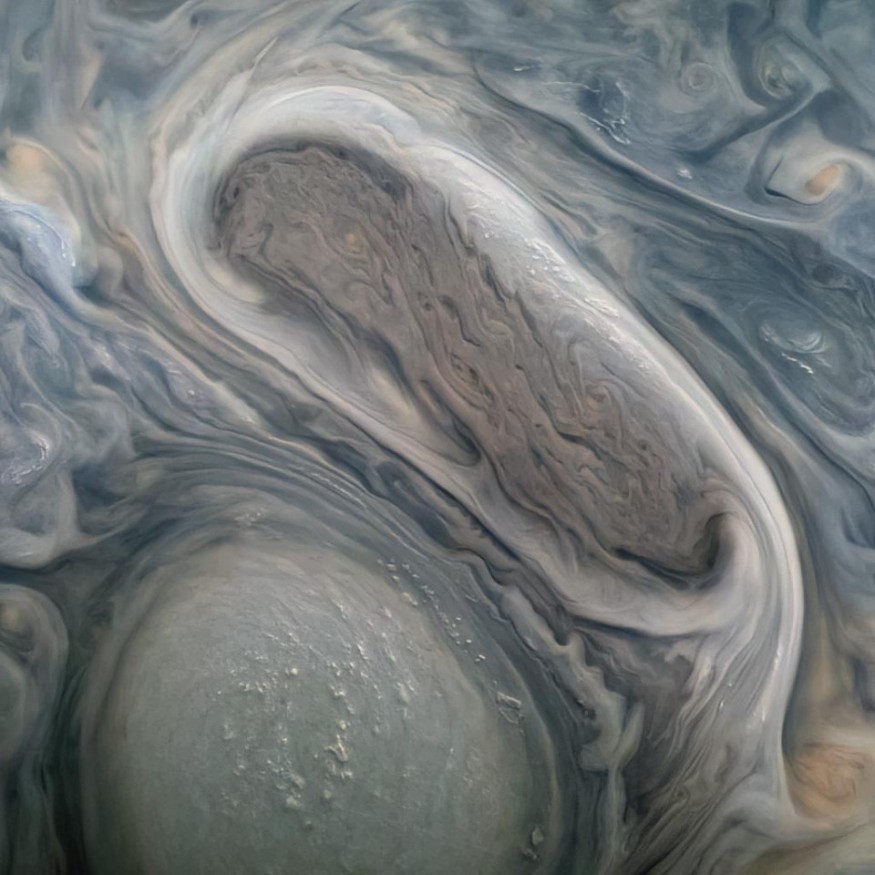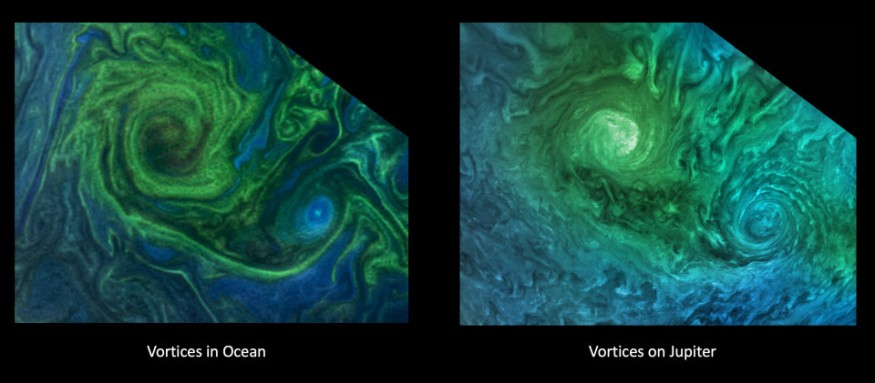A fresh data dump from the Juno mission has provided a delightful holiday gift for space nerds: images and sounds from our solar system's largest planet and its largest moon. Jupiter's whirling "surface" pictures are as beautiful and impressionistic as Jupiter fans have come to expect, but the music track is the true pleasure.
During a briefing at the American Geophysical Union Fall Meeting in New Orleans on Friday, Scott Bolton, Juno lead investigator at the Southwest Research Institute in San Antonio, said that the data and photographs from these flybys are rewriting all we know about Jupiter.
Bolton unveiled a few seconds of sound recorded during Juno's summer visit to Ganymede. The spacecraft's Waves instrument picked up electric and magnetic radio waves produced by the planet's magnetic field, which was intended to detect these waves to make the clip of the moon's sounds. The sounds are reminiscent of a psychedelic space-era soundtrack.
"This soundtrack is just wild enough to make you feel as if you were riding along as Juno sails past Ganymede for the first time in more than two decades," Bolton said per CNN. "If you listen closely, you can hear the abrupt change to higher frequencies around the midpoint of the recording, which represents entry into a different region in Ganymede's magnetosphere."
NASA Juno Spacecraft Hears Jupiter Moon Ganymede; what is it?
The sound of Ganymede was caught by NASA's Juno spacecraft as part of its flyby mission to learn more about Jupiter's biggest moon and the Solar System. The audio recording was acquired from NASA Juno's recent flyby mission in Jupiter's neighborhood, which produced a sound that astounded the planet's researchers and scientists.
ALSO READ : NASA Juno Spacecraft Shares a Stunning Photo of Jupiter Making 'Mocha Swirls' On Its Atmosphere
Although the sound generated by Ganymede is not one that people can understand if heard directly, scientists have obtained a wealth of information about the moon and Jupiter's planet. Jupiter's near flyby missions provide further information on the planet and its moon, including descriptions of its magnetic fields.
NASA said the seas and atmospheres of Jupiter and Earth are comparable, as revealed by the Juno spacecraft during its flyby missions. The various connections of the planets in the Solar System provide a wealth of information about the origins of the cosmos, especially as it is still a hotly discussed topic.
More Jupiter Photos

The Juno data release also provided us with two fresh views of Jupiter. The one above, gathered on Nov. 29, seems like a painting of the globe. Juno's "visible-light imager" acquired the image, which shows two of the planet's churning, roaring storm systems up close.
Another view from Jupiter resembles one of the planet's storms to an Earthly algae growth recorded by satellite photos in the Norwegian Sea. Lia Siegelman, an oceanographer, encouraged the comparison because she views satellite photography like this as a way to gain a deeper knowledge of Earth's seas.

"When I saw the richness of the turbulence around the Jovian cyclones, with all the filaments and smaller eddies, it reminded me of the turbulence you see in the ocean around eddies," Siegelman said per Mashable. "These are especially evident in high-resolution satellite images of vortices in Earth's oceans that are revealed by plankton blooms that act as tracers of the flow."
RELATED ARTICLE : Great Red Spot: Is The Biggest Storm in the Solar System Shrinking? NASA's Juno Mission Measures the Vortex's Gravity
Check out more news and information on Space in Science Times.












